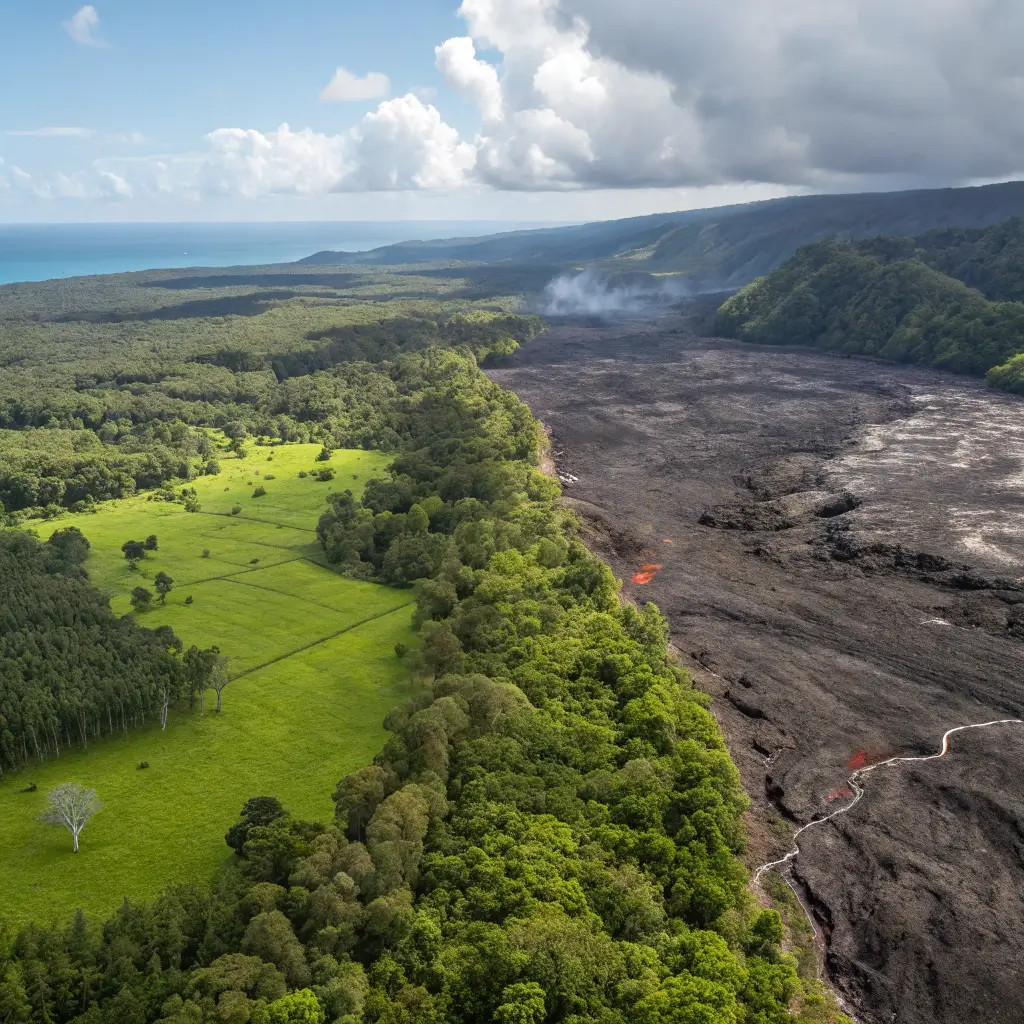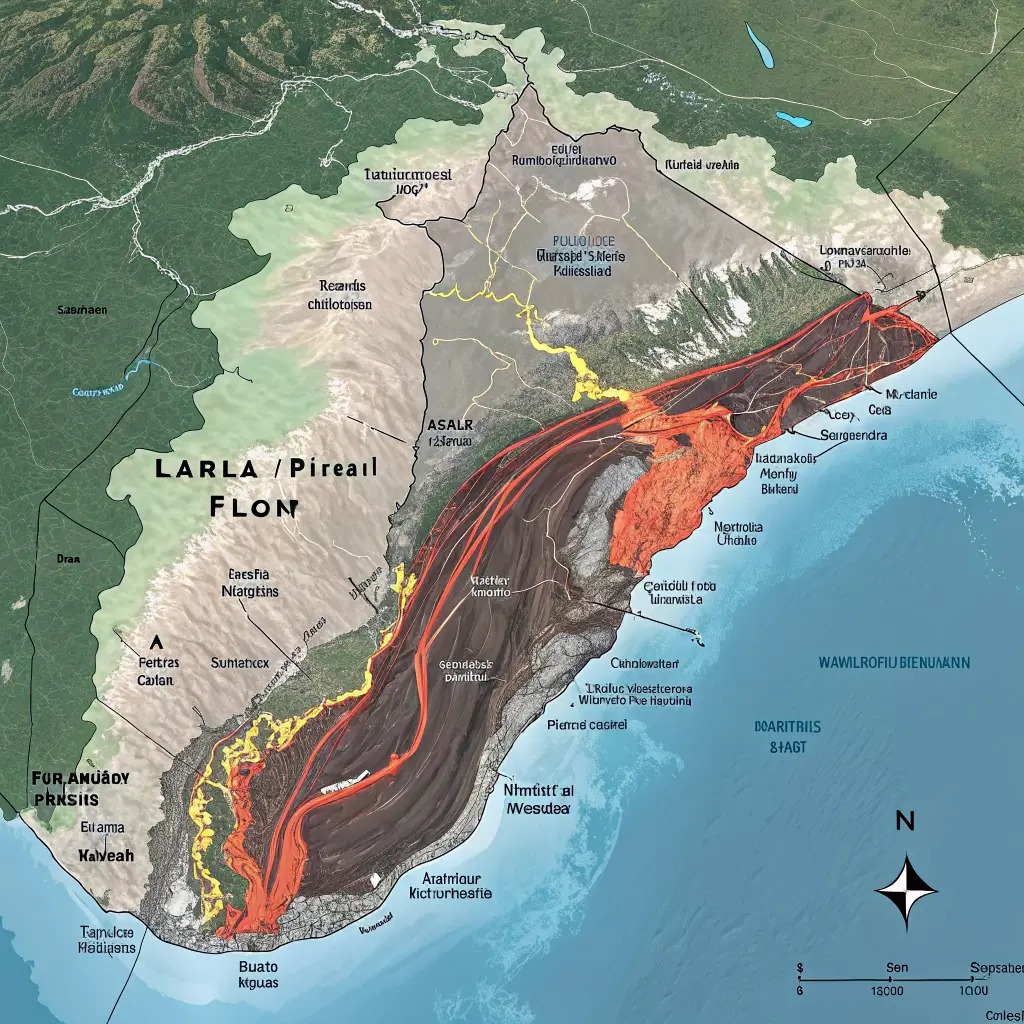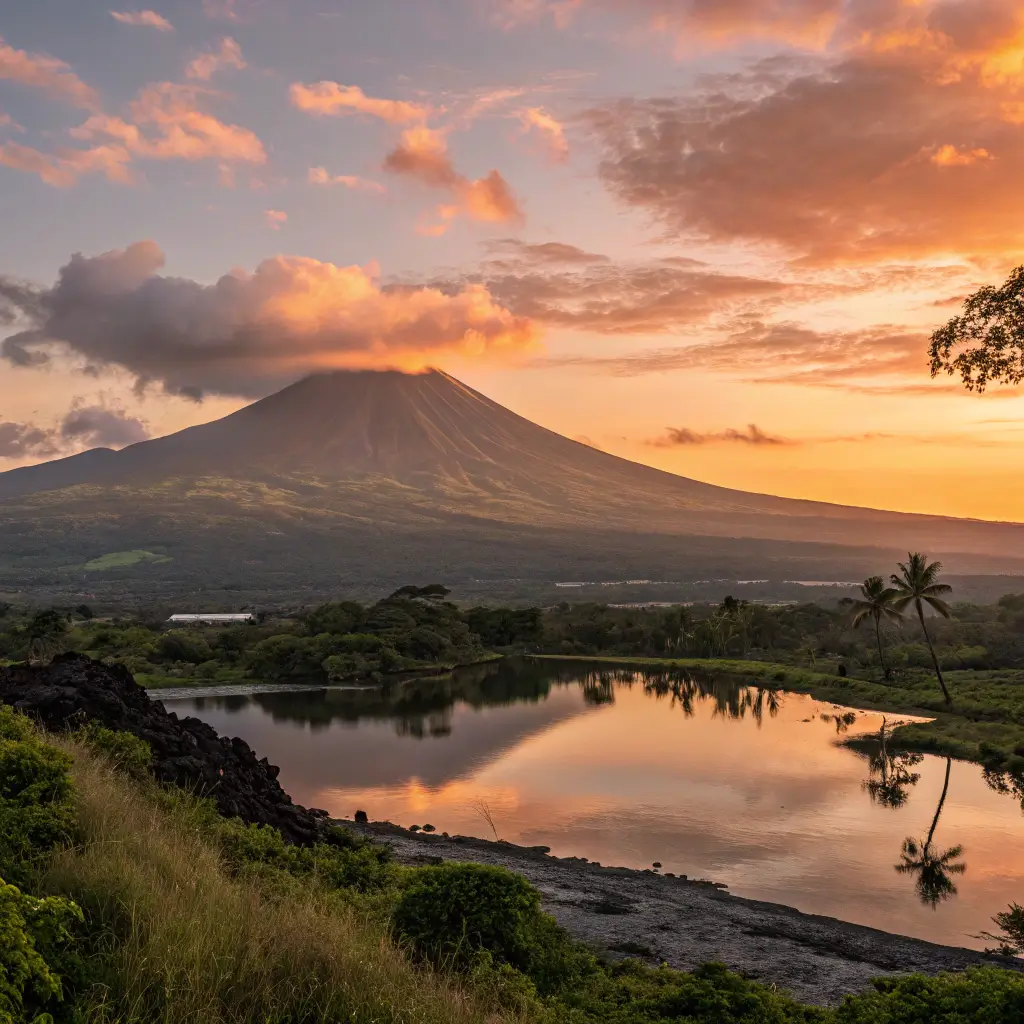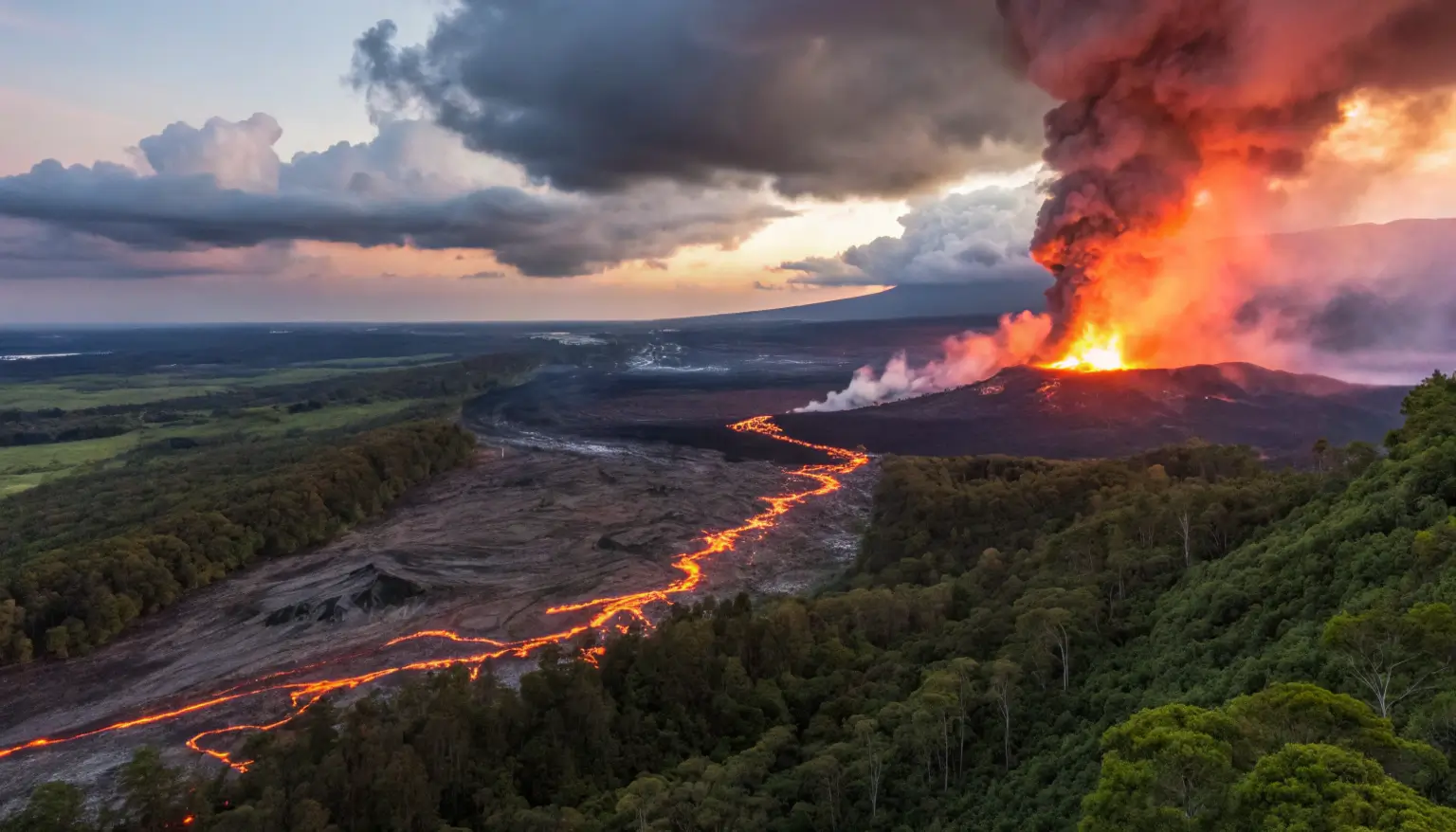The recent activity of Kilauea has captured the attention of scientists and residents alike. As one of the most active volcanoes in the world, Kilauea’s eruptions can have significant implications for Hawaii’s environment and communities. Understanding the dynamics of these eruptions is crucial for safety and preparedness. In this post, we will explore Kilauea’s geological background, its historical eruptions, and the impact of volcanic activity on local communities. “hawaii volcano erupts”
Table of Contents

Overview of Kilauea Volcano
Kilauea is located on the Big Island of Hawaii and is one of the five volcanoes that form the island. It is a shield volcano, characterized by its broad, gently sloping sides formed by the flow of low-viscosity lava. Kilauea has been erupting for over 30 years, with its most recent eruption beginning in 2023. The volcano is monitored closely by the United States Geological Survey (USGS) to ensure public safety. Kilauea’s eruptions can produce lava flows, ash clouds, and volcanic gases, all of which can impact air quality and wildlife. The surrounding communities must remain vigilant and prepared for potential evacuations and safety measures. Understanding the patterns of Kilauea eruptions helps residents and visitors alike to stay informed and safe.
Geological Background
Kilauea is part of the Hawaiian-Emperor seamount chain, formed by the movement of the Pacific tectonic plate over a volcanic hotspot. This hotspot creates magma that rises to the surface, resulting in volcanic activity. Kilauea’s summit caldera is a large depression formed by past eruptions, and its rift zones are areas where lava can flow outwards. The volcano’s activity is driven by the movement of magma beneath the surface, which can lead to explosive eruptions or gentle lava flows. Understanding this geological background is essential for assessing the risks associated with Kilauea’s eruptions.
Historical Eruptions
Kilauea has a rich history of eruptions, with significant events recorded over the past few centuries. The 1983 eruption marked the beginning of a long period of activity, leading to the creation of new land through lava flow. The 2018 eruption was particularly devastating, resulting in the destruction of homes and infrastructure. Each eruption has unique characteristics, influencing the surrounding environment and communities. Studying these historical eruptions provides valuable insights into Kilauea’s behavior and helps inform safety measures for future events.

Recent Eruptions: April 2025
In April 2025, Hawaii witnessed significant volcanic activity as Kilauea erupted, captivating both locals and scientists. This eruption was characterized by a series of explosive events, resulting in substantial lava flow and ash emissions. The eruption began on April 10, with the volcano displaying heightened seismic activity days prior. By April 15, lava fountains reached impressive heights, creating a spectacular yet dangerous display. The eruption’s intensity prompted immediate monitoring by the US Geological Survey, ensuring timely updates for residents and visitors. As the lava flowed towards populated areas, concerns about air quality and safety measures became paramount. Emergency services were activated, and evacuation plans were put in place to protect communities at risk. The eruption continued to evolve, with fluctuations in activity levels, showcasing Kilauea’s unpredictable nature. Scientists noted that this eruption was part of a broader pattern of Kilauea eruptions, which have occurred intermittently over the past few decades. The geological features of the area, including the caldera and rift zones, played a crucial role in the eruption’s dynamics. Understanding these details is essential for assessing the potential impact on the environment and local communities.
Eruption Details
The April 2025 Kilauea eruption was marked by several key features. Initial eruptions produced lava fountains that reached heights of up to 150 feet. The lava flow spread rapidly, covering approximately 10 square miles within the first week. Ash plumes rose to altitudes of 30,000 feet, affecting air travel and prompting flight cancellations. The eruption’s intensity fluctuated, with periods of increased seismic activity followed by quieter phases. Monitoring stations recorded thousands of earthquakes, indicating the movement of magma beneath the surface. The USGS provided regular updates, emphasizing the importance of community preparedness and safety measures. Residents were advised to stay informed about air quality, as volcanic gases could pose health risks. Overall, the eruption showcased Kilauea’s dynamic nature and the ongoing need for vigilance in volcanic regions.
Impact on Local Communities
The April 2025 eruption had profound effects on local communities surrounding Kilauea. Evacuations were necessary for several neighborhoods, with residents temporarily displaced from their homes. Emergency shelters were established, providing safety and resources for those affected. The lava flow threatened infrastructure, including roads and utilities, leading to significant disruptions. Local businesses faced challenges as tourism declined due to safety concerns. However, community resilience shone through as residents banded together to support one another. Volunteer efforts emerged, providing food, shelter, and emotional support to those in need. The eruption also sparked discussions about hawaii volcano erupts safety, emphasizing the importance of preparedness and education. Schools and community organizations organized workshops to inform residents about volcanic activity and safety measures. Environmental effects were also notable, with wildlife habitats impacted by lava flow and ash fallout. Long-term recovery plans are being developed to address the volcanic impact on communities, ensuring that residents can rebuild and thrive in the aftermath of the eruption.

Safety Measures and Evacuations
hawaii volcano erupts can pose significant risks to residents and visitors. Understanding safety measures is crucial. Authorities recommend staying informed through local news and alerts. Evacuation plans should be established before an eruption occurs. Residents should know their evacuation routes and have a go-bag ready. This bag should include essentials like water, food, medications, and important documents. During an eruption, follow official instructions promptly. Avoid areas with heavy lava flow and ashfall. Stay indoors if advised, and keep windows and doors closed to minimize air quality issues. Use N95 masks if you must go outside to protect against ash inhalation. Regular drills can enhance community readiness. Schools and workplaces should have clear emergency protocols. Engaging in community preparedness initiatives can foster resilience. Local organizations often provide resources and training for residents. Understanding the volcanic activity in your area can help you anticipate potential hazards. Always prioritize safety over property during an evacuation.
Government Response
The government plays a vital role in managinghawaii volcano erupts. The U.S. Geological Survey (USGS) monitors volcanic activity and provides real-time data. Local emergency management agencies coordinate evacuations and safety measures. They issue alerts based on eruption forecasts and lava flow predictions. Public information campaigns educate residents about risks and safety protocols. Collaboration with local communities ensures effective response strategies. Emergency shelters are established to accommodate evacuees. Financial assistance may be available for those affected by volcanic impacts. Continuous assessment of air quality and environmental effects is crucial. The government also invests in research to improve eruption prediction models.
Community Preparedness
Community preparedness is essential for mitigating the effects of volcanic eruptions. Residents should participate in local emergency planning meetings. Forming neighborhood response teams can enhance collective safety. Regular training sessions on evacuation procedures and first aid can empower individuals. Establishing communication networks ensures everyone stays informed during an eruption. Local schools can incorporate volcano safety into their curricula. Engaging with local wildlife organizations can address the impact of eruptions on ecosystems. Community drills can simulate evacuation scenarios, helping residents practice their response. Sharing resources and information fosters a culture of preparedness. Building strong community ties can significantly improve resilience during crises.
Environmental Impact of Eruptions
Hawaii volcano erupts have profound environmental effects. The eruptions can reshape landscapes, alter ecosystems, and impact air quality. Understanding these impacts is crucial for residents and visitors alike. Volcanic activity, particularly from Kilauea eruptions, can lead to significant changes in the environment. The lava flow can create new landforms while destroying existing habitats. This dynamic process highlights the power of nature and the need for community preparedness.
Effects on Air Quality
Air quality is significantly affected during eruptions. Volcanic ash and gases, such as sulfur dioxide, can lead to respiratory issues. Residents may experience poor air quality, especially downwind of the eruption site. Monitoring air quality is essential for safety. Communities should stay informed about air quality levels during eruptions. Wearing masks and using air purifiers can help mitigate health risks. Understanding these effects is vital for hawaii volcano erupts safety.
Impact on Wildlife and Ecosystems
Wildlife and ecosystems face severe challenges during eruptions. Lava flows can destroy habitats, displacing animals and plants. Some species may adapt, while others may face extinction. The recovery of ecosystems can take years, if not decades. Volcanic eruptions can also create new habitats, fostering biodiversity. Community awareness of these changes is essential for conservation efforts. Engaging in local wildlife protection initiatives can help mitigate the impact of eruptions.
How to Experience Kilauea Safely
Hawaii volcano erupts, drawing visitors eager to witness nature’s power. Kilauea eruptions are among the most active in the world, offering breathtaking views. However, safety is paramount when exploring volcanic activity. Understanding the risks and preparing accordingly can enhance your experience while ensuring your well-being.
Best Viewing Locations
hawaii volcano erupts National Park is the prime spot for observing Kilauea. The Kilauea Overlook provides stunning views of the caldera. Jaggar Museum offers educational insights and panoramic vistas. Chain of Craters Road leads to various viewpoints, showcasing lava flows and craters. Always check park alerts for the latest information on accessibility and safety.
Safety Tips for Visitors
Stay informed about current volcanic activity through official channels. Wear appropriate gear, including sturdy shoes and masks for air quality protection. Keep a safe distance from lava flows and unstable ground. Follow park guidelines and respect barriers. Be prepared for sudden changes in weather and volcanic gases. Community preparedness is essential; familiarize yourself with evacuation routes and emergency contacts.
Conclusion
Hawaii volcano erupts are a powerful reminder of nature’s force and beauty. Understanding the dynamics of eruptions, especially from Kilauea, is crucial for residents and visitors alike. The impact of volcanic activity extends beyond immediate danger; it shapes the environment and communities. By prioritizing hawaii volcano erupts safety and community preparedness, we can mitigate risks and enhance resilience. Awareness of volcanic impact on communities and environmental effects of eruptions fosters a culture of safety. As we continue to study and monitor these majestic volcanoes, we must respect their power while embracing the unique opportunities they present. Stay informed, stay safe, and appreciate the wonders of Hawaii’s volcanic landscape.

FAQs
What causes a volcano to erupt?
Volcanoes erupt due to the movement of tectonic plates and the buildup of pressure from magma beneath the Earth’s surface.
How often does Kilauea erupt?
Kilauea is one of the most active volcanoes in the world, with eruptions occurring frequently, sometimes multiple times a year.
What should I do if I am near an erupting volcano?
If you are near an erupting volcano, follow local authorities’ evacuation orders, stay indoors to avoid ash inhalation, and keep emergency supplies ready.
Can volcanic eruptions affect air travel?
Yes, volcanic eruptions can produce ash clouds that disrupt air travel, leading to flight cancellations and delays.
Are there any benefits to volcanic eruptions?
Yes, volcanic eruptions can enrich soil, create new land, and contribute to the formation of geothermal energy sources.


